Valve Corporation Bundle
Who Really Owns Valve Corporation?
Ever wondered who calls the shots at the innovative video game company, Valve Corporation? Unlike many industry giants, Valve operates under a unique ownership model, setting it apart in the competitive landscape. Understanding Valve Corporation SWOT Analysis can give you a better understanding of the company. This private structure allows Valve to prioritize long-term innovation and maintain its independence, but who exactly holds the reins?
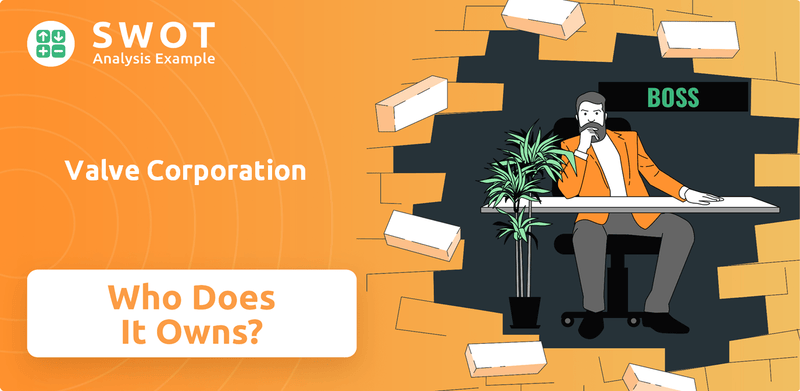
Delving into the question of "Who owns Valve" unveils a fascinating story of entrepreneurial vision and strategic choices. From its inception by Gabe Newell and Mike Harrington to its current status, the Valve owner structure has profoundly shaped the company's trajectory. This exploration provides crucial insights for anyone interested in the video game company's sustained success and its unique position within the industry, including the Steam platform.
Who Founded Valve Corporation?
The story of Valve Corporation begins in 1996, with its foundation by Gabe Newell and Mike Harrington. Both founders brought a wealth of experience from their time at Microsoft, where they had worked on early versions of the Windows operating systems. Their combined expertise laid the groundwork for a company focused on innovation in the interactive entertainment industry.
From the outset, the ownership structure of Valve was primarily held by Newell and Harrington. While the exact initial equity split isn't publicly detailed, it's understood that the co-founders controlled the majority of shares. This structure allowed them to maintain control over the company's direction.
Valve's early years were marked by a self-funded approach, with no external investors or venture capital involved. This decision was pivotal, enabling the founders to steer the company's creative and strategic vision independently. This approach set the stage for Valve's unique culture and business model.
Gabe Newell and Mike Harrington, former Microsoft employees, founded Valve Corporation in 1996.
The primary ownership was split between Newell and Harrington, with no external investors initially.
In 2000, Mike Harrington left Valve, selling his stake to Gabe Newell.
This transaction solidified Gabe Newell's position as the primary owner and key figure.
Valve's independent status allowed for a unique organizational structure and long-term focus.
The company's business model has evolved, with the Steam platform playing a central role.
The evolution of Valve's ownership is a key part of its history. With Mike Harrington's departure in 2000 and the subsequent sale of his stake to Gabe Newell, the Valve owner became predominantly Gabe Newell. This move solidified Newell's control and underscored the company's commitment to remaining independent, free from the pressures often associated with external shareholders or public offerings. This concentrated ownership has allowed Valve to foster a unique company culture, with a flat organizational structure and a focus on long-term innovation, as seen in its development of the Steam platform and various successful video game company titles. For more insights into the competitive landscape, you can explore the Competitors Landscape of Valve Corporation.
Understanding the ownership structure is crucial for grasping Valve Corporation's unique approach to the gaming industry.
- Who founded Valve Corporation: Gabe Newell and Mike Harrington.
- Early ownership was primarily split between the founders.
- Mike Harrington sold his stake in 2000.
- Is Gabe Newell the sole owner of Valve: Gabe Newell is the primary owner.
Valve Corporation SWOT Analysis
- Complete SWOT Breakdown
- Fully Customizable
- Editable in Excel & Word
- Professional Formatting
- Investor-Ready Format
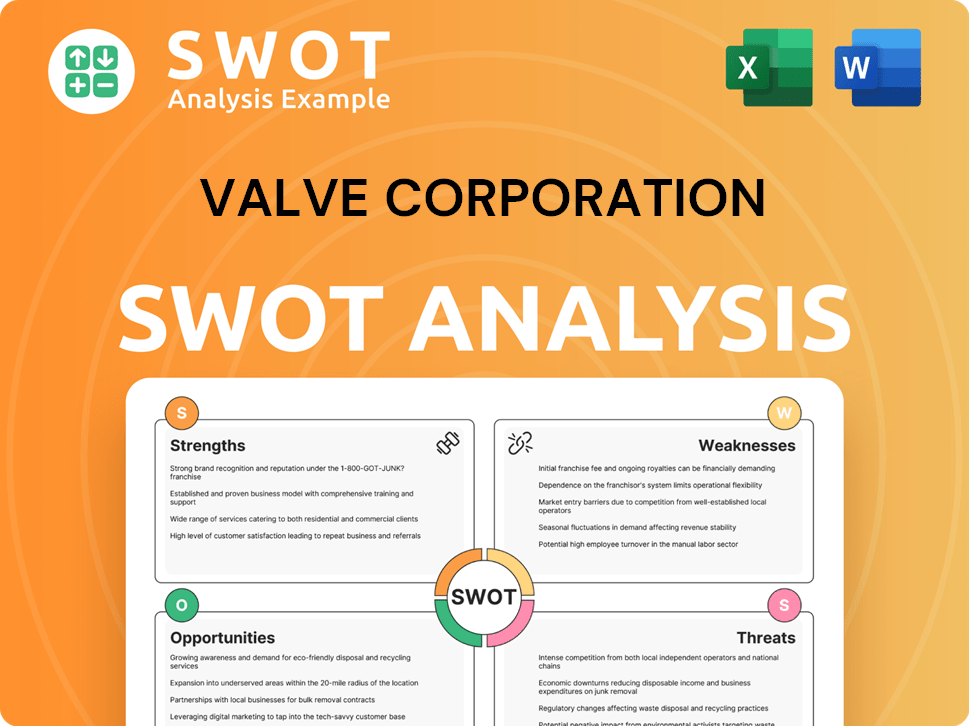
How Has Valve Corporation’s Ownership Changed Over Time?
The ownership of Valve Corporation has been a consistent narrative since its inception. The company has remained privately held, a characteristic that sets it apart from many tech giants. This structure means there are no public shareholders, and the ownership is concentrated. The primary figure in this ownership structure is Gabe Newell, who has held the majority stake for many years.
The evolution of Valve's ownership is marked by key events. Following the departure of co-founder Mike Harrington in 2000, Gabe Newell acquired Harrington's shares. This transaction solidified Newell's position as the principal owner. Since then, there have been no significant changes in the ownership structure, with no external investments or public offerings. This has allowed Valve to maintain a high degree of autonomy in its operations.
| Event | Date | Impact on Ownership |
|---|---|---|
| Co-founder Mike Harrington's Departure | 2000 | Gabe Newell acquired Harrington's shares, increasing his ownership stake. |
| No Public Stock Offerings (IPOs) | Ongoing | Valve remains a privately held company, with no external shareholders. |
| No External Investments | Ongoing | No venture capital or private equity investments have diluted Newell's ownership. |
The current ownership structure of Valve Corporation centers around Gabe Newell. While the exact percentage of his ownership is not publicly disclosed, it is widely understood that he holds the controlling interest. Other stakeholders include long-term employees who may have been granted stock options. This ownership model has allowed Valve to focus on long-term projects and innovation, such as the continuous development of the Growth Strategy of Valve Corporation and the Steam platform, without the pressures of quarterly financial reporting to external shareholders. This structure has undoubtedly influenced Valve's strategy, allowing for a focus on innovation and community engagement over immediate financial returns to external shareholders.
Gabe Newell is the primary owner of Valve Corporation, a video game company.
- Valve has remained privately held since its founding.
- There have been no public stock offerings or external investments.
- This structure allows Valve to focus on long-term projects and innovation.
- Valve's focus is on the Steam platform and game development.
Valve Corporation PESTLE Analysis
- Covers All 6 PESTLE Categories
- No Research Needed – Save Hours of Work
- Built by Experts, Trusted by Consultants
- Instant Download, Ready to Use
- 100% Editable, Fully Customizable
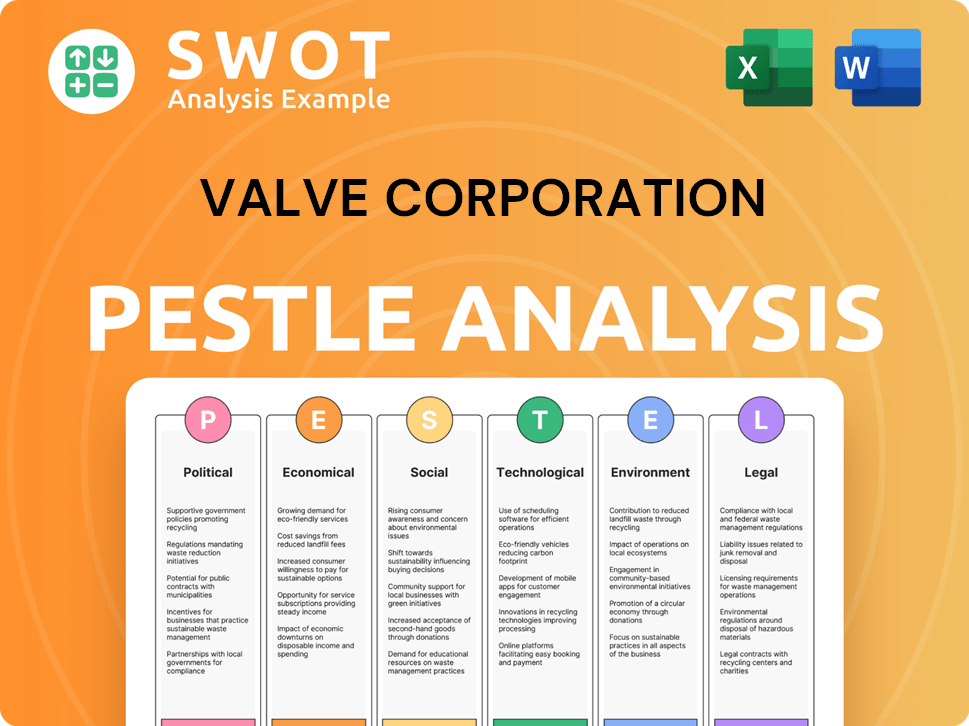
Who Sits on Valve Corporation’s Board?
As a privately held video game company, Valve Corporation operates without a traditional board of directors in the same way a publicly traded company does. The company's structure is primarily influenced by its founder and owner, Gabe Newell. While specific details on the internal governance structure are not publicly available, the ultimate authority and strategic direction are largely determined by Newell, given his significant ownership stake. The company's focus remains on innovation within the gaming industry, particularly through its Steam platform and game development.
Valve's approach to management is unconventional, often described as a flat structure where employees have considerable autonomy. However, this structure does not negate the concentration of voting power with the primary owner. The absence of public records regarding dual-class shares or complex voting arrangements is typical for privately held companies. Decisions on company strategy and product direction are primarily internal, driven by Newell's vision and the collaborative efforts of long-tenured employees. This allows for rapid decision-making and a unified strategic vision, unburdened by external shareholder demands. For more insights into their marketing approach, you can explore the Marketing Strategy of Valve Corporation.
| Key Aspect | Details | Status |
|---|---|---|
| Ownership | Primarily owned by Gabe Newell | Private |
| Board of Directors | Not a traditional board structure | Internal Leadership Team |
| Governance | Highly influenced by Gabe Newell | Centralized |
Valve Corporation's ownership structure is centered around Gabe Newell, who holds a significant stake in the company. This structure allows for streamlined decision-making and a unified strategic vision. The company's flat management style empowers employees while maintaining Newell's ultimate authority.
- Gabe Newell is the primary owner.
- The company operates without a traditional board of directors.
- Decisions are primarily internal and driven by Newell's vision.
- Valve remains a privately held video game company.
Valve Corporation Business Model Canvas
- Complete 9-Block Business Model Canvas
- Effortlessly Communicate Your Business Strategy
- Investor-Ready BMC Format
- 100% Editable and Customizable
- Clear and Structured Layout
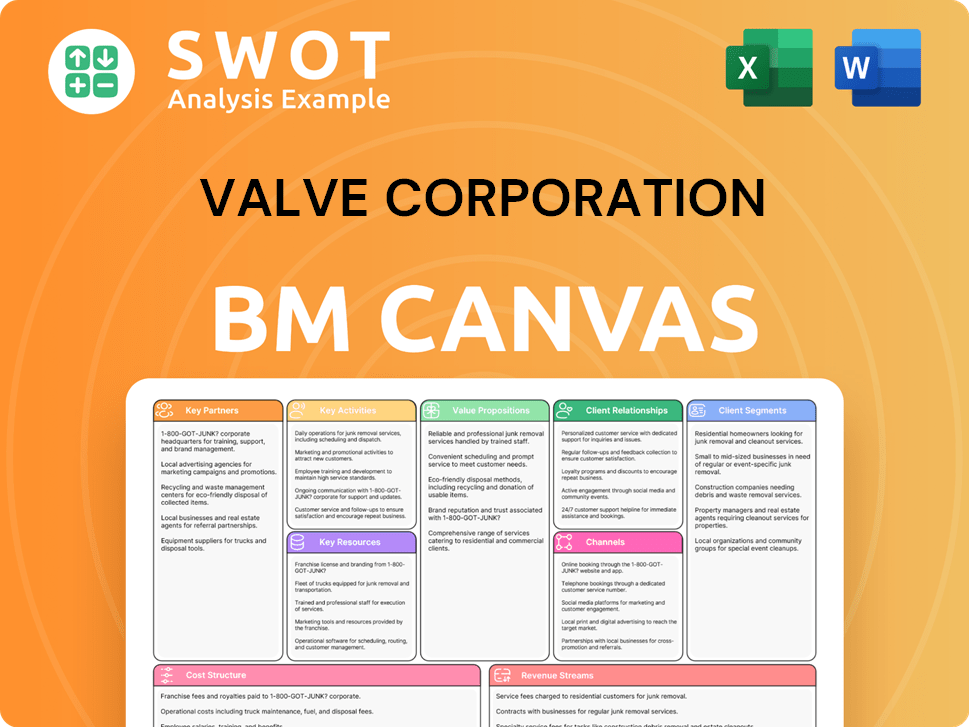
What Recent Changes Have Shaped Valve Corporation’s Ownership Landscape?
Over the past few years, Valve Corporation has remained a privately held entity. This status has been consistent throughout its history, with no public announcements of significant ownership changes, such as share buybacks or secondary offerings. The company's strategic moves, including the expansion of the Steam platform and the development of the Steam Deck, showcase its ability to invest in long-term projects without external financial pressures. The core ownership structure appears stable, with no indications of shifts in control.
Industry trends reveal increasing institutional ownership among public companies and consolidation in the gaming sector. However, Valve Corporation stands apart due to its private status. Leadership changes have been internal, and Gabe Newell, the founder, remains the central figure in the company's ownership and strategic direction. There have been no public statements suggesting a potential privatization or a future public listing. This independent ownership model has allowed Valve to prioritize innovation and player experience. This approach allows Valve to maintain its unique corporate culture and pursue ambitious, long-term initiatives.
Valve Corporation is privately held. Gabe Newell is a central figure in the company's ownership and strategic direction. The company focuses on long-term projects.
Valve prioritizes innovation and player experience. The company's focus is on long-term growth. This strategy is supported by its private ownership structure.
Valve Corporation Porter's Five Forces Analysis
- Covers All 5 Competitive Forces in Detail
- Structured for Consultants, Students, and Founders
- 100% Editable in Microsoft Word & Excel
- Instant Digital Download – Use Immediately
- Compatible with Mac & PC – Fully Unlocked
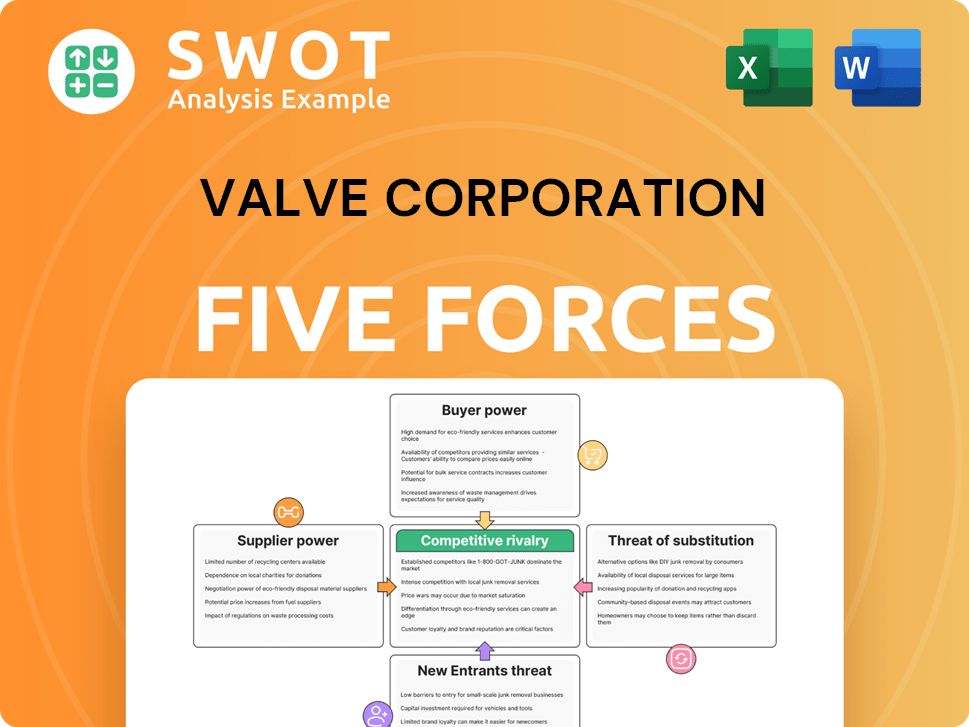
Related Blogs
- What are Mission Vision & Core Values of Valve Corporation Company?
- What is Competitive Landscape of Valve Corporation Company?
- What is Growth Strategy and Future Prospects of Valve Corporation Company?
- How Does Valve Corporation Company Work?
- What is Sales and Marketing Strategy of Valve Corporation Company?
- What is Brief History of Valve Corporation Company?
- What is Customer Demographics and Target Market of Valve Corporation Company?
Disclaimer
All information, articles, and product details provided on this website are for general informational and educational purposes only. We do not claim any ownership over, nor do we intend to infringe upon, any trademarks, copyrights, logos, brand names, or other intellectual property mentioned or depicted on this site. Such intellectual property remains the property of its respective owners, and any references here are made solely for identification or informational purposes, without implying any affiliation, endorsement, or partnership.
We make no representations or warranties, express or implied, regarding the accuracy, completeness, or suitability of any content or products presented. Nothing on this website should be construed as legal, tax, investment, financial, medical, or other professional advice. In addition, no part of this site—including articles or product references—constitutes a solicitation, recommendation, endorsement, advertisement, or offer to buy or sell any securities, franchises, or other financial instruments, particularly in jurisdictions where such activity would be unlawful.
All content is of a general nature and may not address the specific circumstances of any individual or entity. It is not a substitute for professional advice or services. Any actions you take based on the information provided here are strictly at your own risk. You accept full responsibility for any decisions or outcomes arising from your use of this website and agree to release us from any liability in connection with your use of, or reliance upon, the content or products found herein.